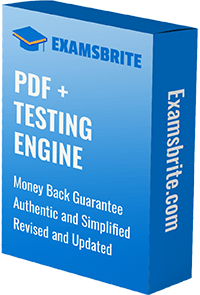
Certified Tester Foundation Level Agile Tester
Last Update Nov 30, 2025
Total Questions : 80
We are offering FREE CTFL-AT iSQI exam questions. All you do is to just go and sign up. Give your details, prepare CTFL-AT free exam questions and then go for complete pool of Certified Tester Foundation Level Agile Tester test questions that will help you more.



Which of the following describes a direct benefit of early and frequent feedback associated with the adoption of continuous integration?
Which agile development approach incorporates the following practices:
* a project is divided into iterations called sprints
* each sprint results in a potentially releasable/shippable product?
In a sprint planning, the product owner presents a user story written on a card. The team starts having a discussion with the product owner to get an understanding on how the software should work.
The user story written on the card is:
"As a customer, I want to subscribe to the mailing list so that I can receive the latest deal in an email."
By applying the 3C concept, which ONE of the following statements is CORRECT?
You are working in a software development company which, for many years, used a sequential development model and was organized into separate departments for each functional group (e.g. business analysts, developers, testers) located within their own office space. Your organization has recently changed to a SCRUM agile framework. Which of the following is an important organizational and behavioral best practice for a tester in the SCRUM team that should have also been practiced when using the sequential model?
Which of the following would provide the MOST independence for testers working with agile teams?
Which of the following is a typical task performed by a tester within a Scrum team?
During a retrospective, which of the following items would be the LEAST effective to generate discussions on process improvement?
Which of the following statements about the testing quadrants model is true?
Which of the following statements about Agile software development approaches is true?
An Agile team is developing a Pay-TV web portal. In Iteration 3, only PayPal and credit card payments are supported. A new user story in Iteration 4 adds payment using credit from a smartcard.
Which of the following would you expect to describe valid and relevant acceptance tests for this user story?
Consider the estimation of a given user story performed separately by two different teams (Team A and Team B) using the Planning Poker technique. Both teams consist of five members and use a deck of cards (0, 1, 2, 3, 5, 8, 13, 20).
Team A quickly decides on an estimate of8 story pointsafter four rounds, withno discussionsbetween rounds.
Team B arrives at3 story pointsafter three rounds, withdiscussionsbetween the lowest and highest estimators after each round.
Which of the following statements would you expect most likely to be true in this scenario?
Which of the following tools would you expect to be the most useful to report defects found during exploratory testing sessions in Agile projects?
Which two of the following statements are CORRECT with regards to test automation on agile projects?
1) Every test developed for past iterations is kept and executed as part of a regression suite for each new release of code.
2) It would be very difficult to ensure high quality in an agile project without test automation.
3) Automated acceptance tests are run regularly as part of the continuous integration full system build.
4) Automated regression suites are only run for the final release of code.
5) In agile projects, the results from automated acceptance tests provide feedback on the overall product quality.
Which of the following allows a developer to define accurate unit tests focused on business needs?
Consider an online application that allows registered users to pay the annual car tax based on the vehicle’s engine power in kW. Given the following user story:
"As a customer I need the online application to calculate the annual car tax amount that I need to pay for my car:
* If the power of the vehicle is less than 20 kW, then the annual car tax is free
* If the power of the vehicle is more or equal than 20 kW but less or equal than 150 kW, then the annual car tax is 250 Euros
* If the power of the vehicle is more than 150 kW, then the annual car tax is 750 Euros"
What is the MOST suitable use of a black-box test design technique for this user story?